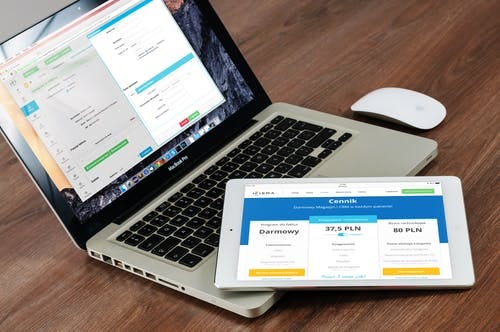
As the business world starts the recovery process following the covid-19 pandemic many businesses are exploring the online space. Whether you are selling products or services online, operating part or all or your business online or just launching your business, you may have considered deploying an ecommerce solution. In our 4-part E-commerce 101 series we will be breaking down all you need to know about e-commerce and help you determine how you can use it to grow your business.
In part one, we will break down what e-commerce entails and how it works. Let’s get started.
What is E-commerce?

E-commerce, also known as electronic commerce or internet commerce, is simply the buying and selling of goods or services using the internet. It also refers to the transfer of money and data to carry out these transactions. When we think of e-commerce, we often think of physical products online or any other transaction that is enabled through the internet such as Amazon or eBay, but there are different types of e-commerce.
Types of E-commerce

Business-To-Business (B2B)
B2B e-commerce refers to all electronic transactions of goods and sales between two companies. This type of e-commerce explains the relationship between the producers/manufacturers of a product and the wholesalers/retailers who advertise the product to their audience/consumer.
Business-To-Consumer (B2C)
B2C is the most common form of e-commerce. This type of e-commerce refers to electronic business relationships between businesses and consumers.
Consumer-To-Consumer (C2C)
This type of e-commerce deals with all electronic transactions that take place between consumers. These transactions are typically provided by online platforms such as Cash App. However, these transactions are usually done through social media networks and websites.
Consumer-To-Business (C2B)
Many entrepreneurs and creatives are probably familiar with this type of e-commerce. C2B as the name suggests, refers to consumers making their services available for a company to purchase.
Consumer-To-Administration (C2A)
This e-commerce category has been growing as many businesses have been forced to go paperless or simply be more efficient. This category of e-commerce encompasses individuals doing business with a public administration. A common example of this is scheduling an appointment with your healthcare provider.
How Does E-Commerce Work?

Above, we explored what e-commerce is and the variations that exist. Let’s dive into how it really works.
The e-commerce process is usually very straight forward. We often go through these process steps every time we make a purchase online without even knowing it.
Step 1: Order Receipt
This is where customers like you place an order through an e-commerce platform such as a website, like Shopify, Amazon or Ebay. The seller then makes a note of the order.
Step 2: Order Processing
At this stage the details of the order are reviewed, processed and completed. Simply put this is when we receive our order confirmation and shipping alerts via email, pop-up notification or text message to let you know your order has been shipped.
Step 3: Order Delivery
At this step the delivery process is executed. If this step is executed correctly, you will receive exactly what you ordered. However, if it is not, you will receive the wrong product and need to process a return.
Step 4: Order Returns Management
This is the step that is often forgotten and most likely to be poorly managed. Whether you are selling a product or a service, no e-commerce process is complete without a process in place to deal with customer returns and service queries.
This concludes the first part of our E-commerce 101 series. Have you decided which type of e-commerce would work for your business? Does your e-commerce process have all four steps mapped and incorporated in your business? If you have questions about how you can deploy e-commerce solutions for your business, get in touch at www.getmobileedge.com.